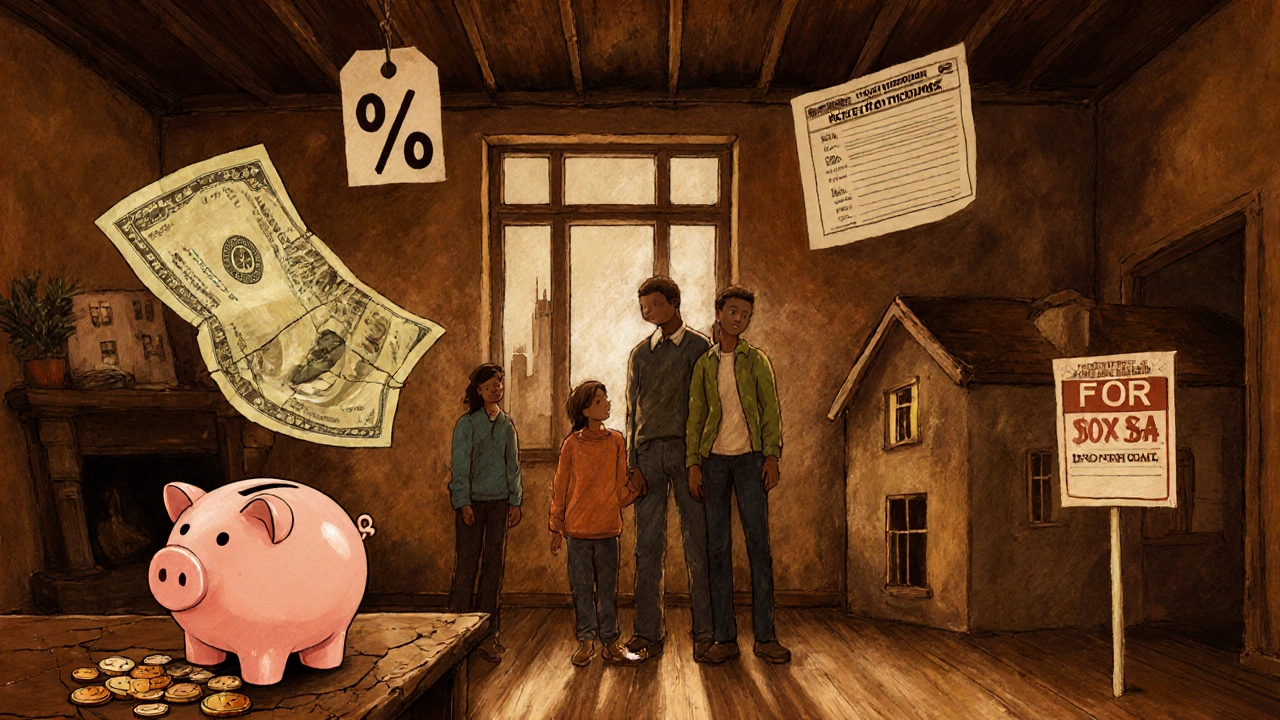When you hear about medical tourism, you probably picture people flying to another country for cheaper surgery. But what if the biggest cost barrier isn’t the procedure itself, but the state you call home? This article breaks down the top U.S. states that make everyday life a financial slog, especially for anyone needing frequent medical care.
Key Takeaways
- Mississippi, West Virginia, and Arkansas rank as the three hardest states financially.
- High poverty rates, low median incomes, and steep healthcare expenses drive the rankings.
- State tax burden and housing affordability add extra weight to residents’ wallets.
- Medical tourists often avoid these states because out‑of‑state insurance won’t cover local high‑cost care.
- Understanding the numbers helps policymakers, patients, and relocation‑seekers make smarter choices.
What We Mean By “Hardest State Financially”
To keep the definition clear, we combine five measurable factors:
- Median Household Income - How much the average family earns before taxes.
- Poverty Rate - Percentage of residents living below the federal poverty line.
- Healthcare Expenditure per Capita - Money spent on health services per person.
- State Tax Burden - Combined income, sales, and property taxes as a share of income.
- Housing Affordability Index - Ratio of median home price to median household income.
Each metric is given a weight (20 % each) and then summed into a Financial Hardship Score. The higher the score, the tougher it is to make ends meet.
Data Sources and Methodology
All numbers come from the most recent government releases (U.S. Census Bureau 2024, Bureau of Economic Analysis 2024, CMS 2023). For healthcare costs we used the National Health Expenditure data set, which tracks spending on hospitals, physician services, and prescription drugs. State tax rates were pulled from the Tax Foundation’s 2024 State Tax Burden Rankings. Housing data reflects the Zillow Home Value Index (Q2 2025).
We calculated the Cost of Living Index for each state by normalizing the five factors to a 100‑point scale, where 100 represents the national average. States above 100 are financially harder than average.
Top 5 Hardest States Financially
| Rank | State | Median Household Income (USD) | Poverty Rate (%) | Healthcare Expenditure per Capita (USD) | State Tax Burden (% of income) | Housing Affordability Index | Financial Hardship Score |
|---|---|---|---|---|---|---|---|
| 1 | Mississippi | 45,900 | 19.8 | 5,200 | 9.7 | 140 | 112.5 |
| 2 | West Virginia | 48,300 | 17.5 | 5,450 | 10.2 | 135 | 110.3 |
| 3 | Arkansas | 49,700 | 16.2 | 5,600 | 9.9 | 130 | 108.9 |
| 4 | Alabama | 52,100 | 15.4 | 5,800 | 10.5 | 128 | 107.2 |
| 5 | Kentucky | 53,500 | 15.0 | 5,900 | 10.8 | 125 | 106.5 |
Notice how each state’s hardest state financially label stems from a mix of low income and high relative costs. Mississippi tops the list not because it has the most expensive housing, but because its median income is the lowest while healthcare spending per person stays near the national average.

Why These States Struggle Financially
Let’s dig into the five pillars that push these states above the 100‑point threshold.
1. Low Median Household Income
Across the South and Appalachia, historical reliance on manufacturing and agriculture limits wage growth. The Median Household Income in Mississippi sits at $45,900, 30 % below the national median of $66,800.
2. High Poverty Rates
Poverty erodes tax bases, meaning less funding for public health programs. Mississippi’s 19.8 % poverty rate is the highest in the country, followed closely by West Virginia at 17.5 %.
3. Healthcare Expenditure per Capita
Even with lower incomes, residents still face national‑average health costs. Medicare data shows a per‑capita spend of $5,200 in Mississippi, roughly 12 % above the national per‑capita average of $4,600. Rural hospitals often charge more for routine services because of limited competition.
4. State Tax Burden
While some think low‑income states have low taxes, the picture is mixed. West Virginia’s combined income, sales, and property taxes equal 10.2 % of average earnings-higher than many low‑cost states like Texas (which has no state income tax).
5. Housing Affordability Index
A value over 100 means housing costs outpace income. Mississippi’s index of 140 indicates a median home costs 1.4 times what a typical family can comfortably afford.
Medical Tourism Implications
For patients traveling across state lines, the financial landscape matters more than geography. Many insurers only cover out‑of‑state care if the destination state’s overall cost of living is lower. In the hardest states, local care can be pricey despite lower wages, discouraging inbound medical tourism.
Moreover, Medicaid expansion under the Affordable Care Act varies by state. Mississippi, West Virginia, and Arkansas have not expanded Medicaid fully, leaving a coverage gap for low‑income residents who might otherwise seek specialist care elsewhere.
These gaps mean:
- Higher out‑of‑pocket bills for chronic disease management.
- Fewer local clinical trials, pushing patients to travel farther.
- Less incentive for international medical tourists, who often look for low‑cost, high‑quality facilities.
How Residents Can Mitigate the Financial Strain
Understanding the numbers is the first step; turning them into action is the next.
- Leverage State Programs - Many counties offer health‑care vouchers or sliding‑scale clinics funded by Medicaid.
- Shop for Insurance - Compare ACA marketplace plans; some states have subsidies that offset higher premiums.
- Consider Telehealth - Remote visits can bypass costly local specialists while still using insurance.
- Relocate Strategically - If you have flexibility, moving to a state with a lower Cost of Living Index (e.g., Texas or Florida) can cut housing and tax expenses dramatically.

Quick Checklist for Prospective Movers or Medical Tourists
- Check the Cost of Living Index for your target state.
- Ask your insurer if out‑of‑state care is covered and at what rate.
- Research state Medicaid expansion status.
- Calculate the total health‑care expense per year (premiums + co‑pays + prescription costs).
- Factor in housing affordability - use the Housing Affordability Index as a rule of thumb.
Future Outlook
Economic forecasts suggest modest income growth in the South, but rising healthcare costs could keep the Financial Hardship Scores stubbornly high through 2030. Policy initiatives-like expanding Medicaid and investing in rural telehealth infrastructure-are the most promising levers to lower the burden.
For now, anyone weighing a move or planning cross‑state medical care should treat the Hardest State Financially metric as a reality check. It’s not just about dollars; it’s about access to care, quality of life, and long‑term financial security.
Frequently Asked Questions
Why isn’t the cost of medical procedures the only factor?
Procedures are just one piece of the puzzle. Daily living costs, insurance coverage, and taxes all shape how affordable health care truly is for residents.
Do these rankings change yearly?
Yes. Updates to median income, tax policy, and health‑care spending shift the scores. We refresh the list annually with the latest Census and CMS data.
Can I qualify for Medicaid in a hard‑state if I move there?
Eligibility depends on state expansion status and your household income. Some hard‑states have narrow eligibility, so you’d need to check the specific state’s Medicaid portal.
Is medical tourism cheaper in these states?
Often not. High local health‑care costs combined with limited insurer networks can make out‑of‑state or overseas care a better financial choice.
How can I lower my health‑care expenses without moving?
Use telehealth services, shop for high‑deductible health plans with health‑savings accounts, and tap into community health clinics that offer sliding‑scale fees.





